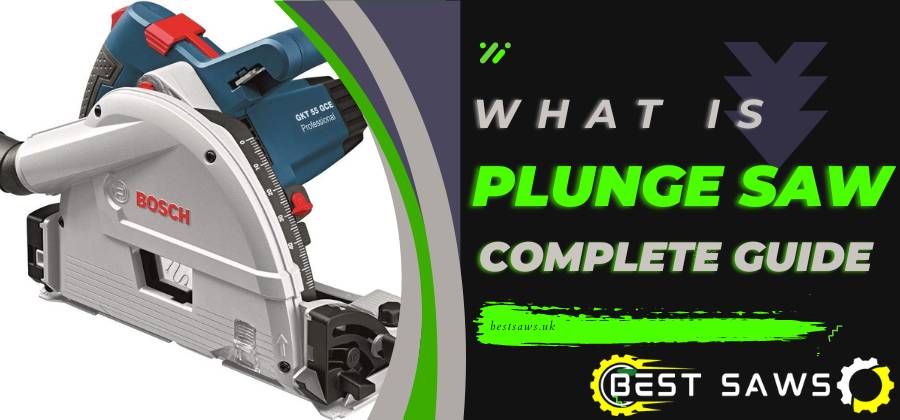Woodworking enthusiasts and professionals alike understand the importance of precise cuts. When it comes to achieving accuracy and versatility, the plunge saw has become an essential tool in the arsenal of woodworkers. If you’re curious about plunge saws and their capabilities, this guide will take you through everything you need to know. From its basic definition to its applications and advantages, we’ll delve into the world of plunge saws.
Introduction to Plunge Saws
A plunge saw, also known as a track saw, is a specialized cutting tool used primarily in woodworking. What sets it apart is its ability to make plunge cuts directly into the material, unlike traditional circular saws that require starting from the edge.
Anatomy of a Plunge Saw
2.1 The Motor and Blade
At its core, a plunge saw consists of a motor responsible for spinning the circular blade. This motor provides the power needed for efficient cutting through various materials.
2.2 Plunge Mechanism
The plunge mechanism is the star feature of this tool. It allows the user to lower the spinning blade onto the material, providing the ability to start a cut anywhere on the surface.
2.3 Depth Adjustment
Plunge saws offer depth adjustment features that control how deep the blade cuts into the material. This is particularly useful for accommodating different material thicknesses.
How Does a Plunge Saw Work?
3.1 Starting the Cut
To initiate a cut, place the saw on the material’s surface with the blade slightly raised. The plunge mechanism ensures the blade remains safely above the material.
3.2 Initiating the Plunge
Activate the plunge mechanism and gently lower the blade into the material. This controlled plunge eliminates the need for making an initial cut from the edge.
3.3 Controlled Cutting
Once the blade is in the material, guide the saw along the desired cutting path. The plunge mechanism maintains a consistent cutting depth, resulting in clean and precise cuts.
Applications of Plunge Saws
4.1 Straight and Bevel Cuts
Plunge saws excel at making straight cuts along the length or width of materials. They can also make bevel cuts at various angles, adding versatility to woodworking projects.
4.2 Precision Joinery
Plunge saws are ideal for creating precise joinery such as grooves, dados, and rabbets, allowing for accurate fitting of pieces.
4.3 Trim Work and Door Installation
In trim work and door installation, plunge saws deliver clean and accurate cuts, ensuring a professional finish without splintering.
Advantages of Using a Plunge Saw
5.1 Precision and Accuracy
The guided plunge mechanism results in accurate cuts, making plunge saws suitable for projects that demand precision.
5.2 Reduced Tear-Out
Because the blade enters the material from above, the risk of tear-out and splintering on the underside is significantly minimized.
5.3 Enhanced Safety
Plunge saws incorporate safety features that reduce the risk of accidental contact with the blade, ensuring safer operation.
Choosing the Right Plunge Saw
6.1 Blade Compatibility
Consider the type and size of blades that your plunge saw can accommodate. Different blades are designed for various materials and cutting tasks.
6.2 Power and Performance
Select a plunge saw with a motor that provides adequate power for the materials you’ll be working with.
6.3 Additional Features
Some plunge saws offer features like variable speed control and dust extraction, enhancing convenience and performance.
Plunge Saw Maintenance and Safety
7.1 Blade Care
Regularly clean and maintain the blade to ensure optimal cutting performance and prevent overheating.
7.2 Operating Safely
Always wear appropriate safety gear, including goggles and hearing protection, when using a plunge saw. Adhere to safety guidelines provided by the manufacturer.
Getting Started with a Plunge Saw
8.1 Setting Up
Ensure proper material support and secure the material before making a cut. Guide rails can help maintain a straight cutting path.
8.2 Proper Technique
Practice your cutting technique on scrap material before tackling your project. Maintain a steady and controlled pace while guiding the saw along the cut.
Frequently Asked Questions
1. Can I use a plunge saw for metal cutting?
Yes, there are plunge saws with specialized blades designed for cutting metal.
2. Are plunge saws suitable for beginners?
Absolutely, plunge saws are user-friendly and suitable for beginners due to their guided cutting mechanism.
3. What materials can I cut with a plunge saw?
Plunge saws are versatile and can cut through various materials, including wood, plywood, and even certain metals.
4. How do I prevent splintering while using a plunge saw?
The plunge mechanism reduces splintering, but using a sacrificial backing board can further minimize splintering on the underside of the material.
